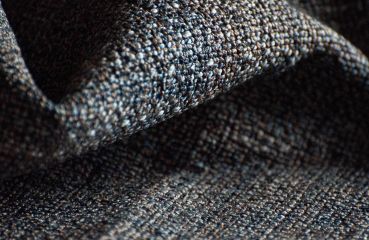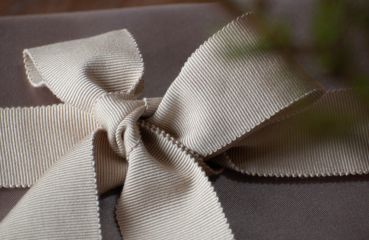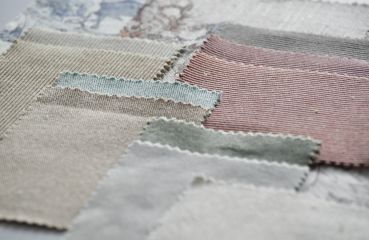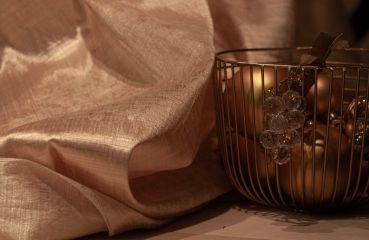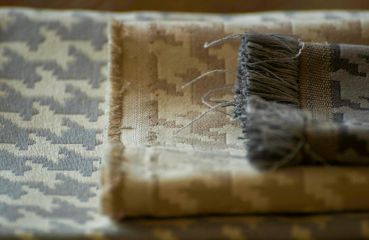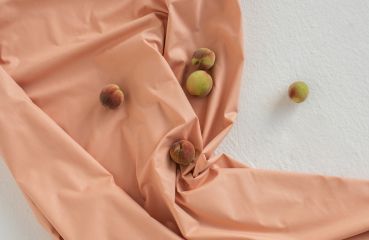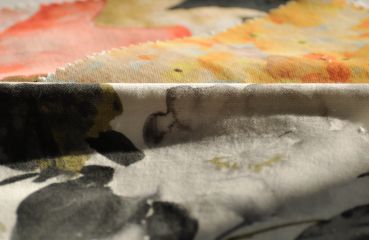NEW FABRIC AESTHETICS REVISITED
From rugs to splendour. How even the most challenging aesthetics gains popularity, becomes commonplace and finally emerges as a new icon.

Some time ago we wrote about how new aesthetics becomes disseminated in the world of design. We reported on the aesthetic effects of new design phenomena when discussing sustainable development. In order to provide harmony and balance, closed-loop recycling seems to be the only right solution and material recycling is becoming our every-day reality.
New methods of obtaining recycled fibres render materials with new, yet challenging aesthetics. Unusual colours, textures, structures and imperfections require a new angle on perspective and acceptance.
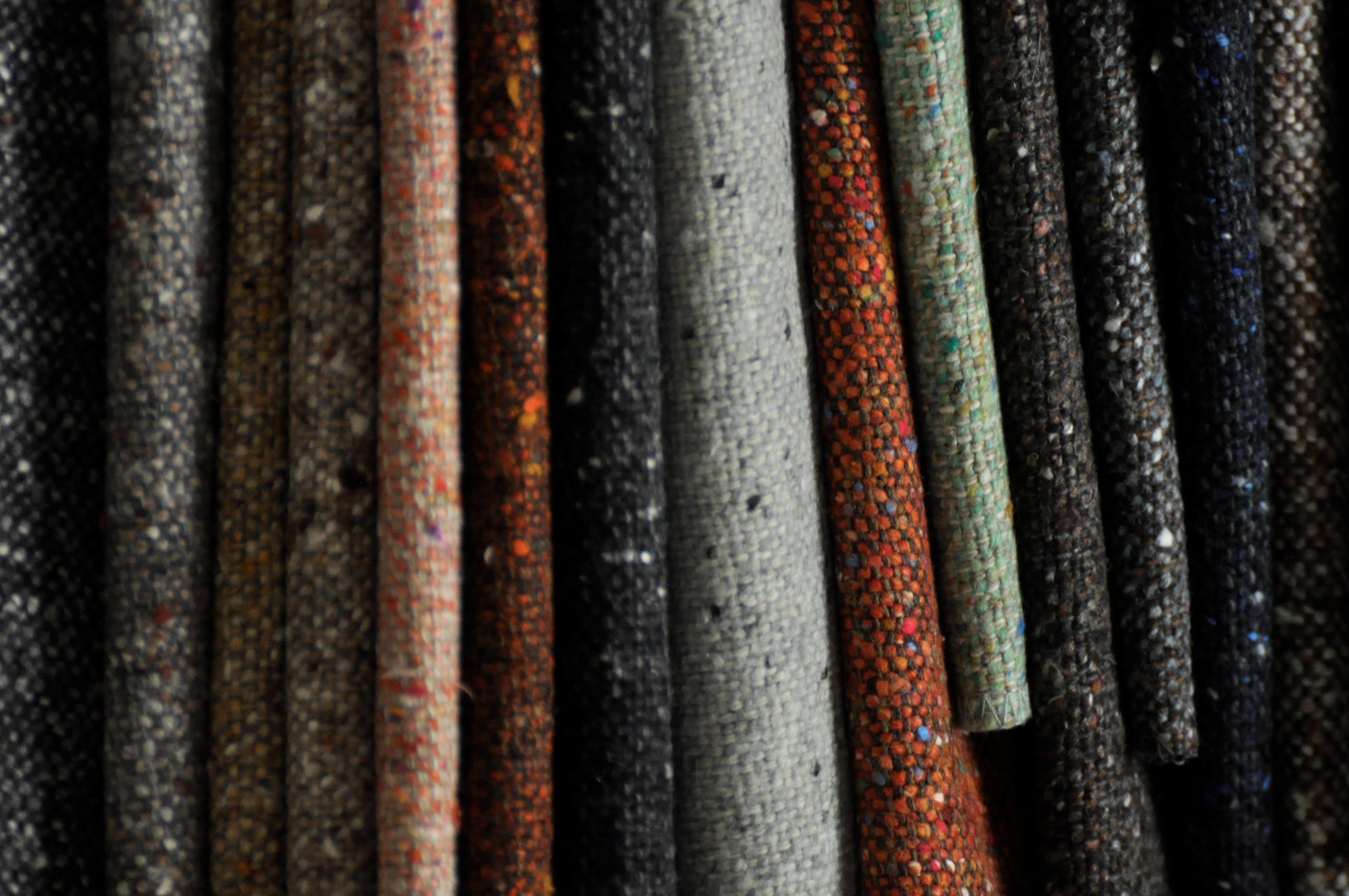
Textiles yielded by milling or other types of recycling often have specific imperfections, irregularities, impurities or even “dirt”. All of this has until recently been associated with inferior and industrial Greige goods intended for maintenance or cleaning, but by no means decorative purposes.
Meanwhile, the consolidation of trends and, more importantly, greater awareness among consumers lead not only to the dissemination of this “impure aesthetics”, but also to its appreciation and application in iconic interior design ventures.
“Granola”, recently added to Dekoma’s offer, quickly became a favourite fabric of Polish designers, readily used in newly implemented furniture projects.
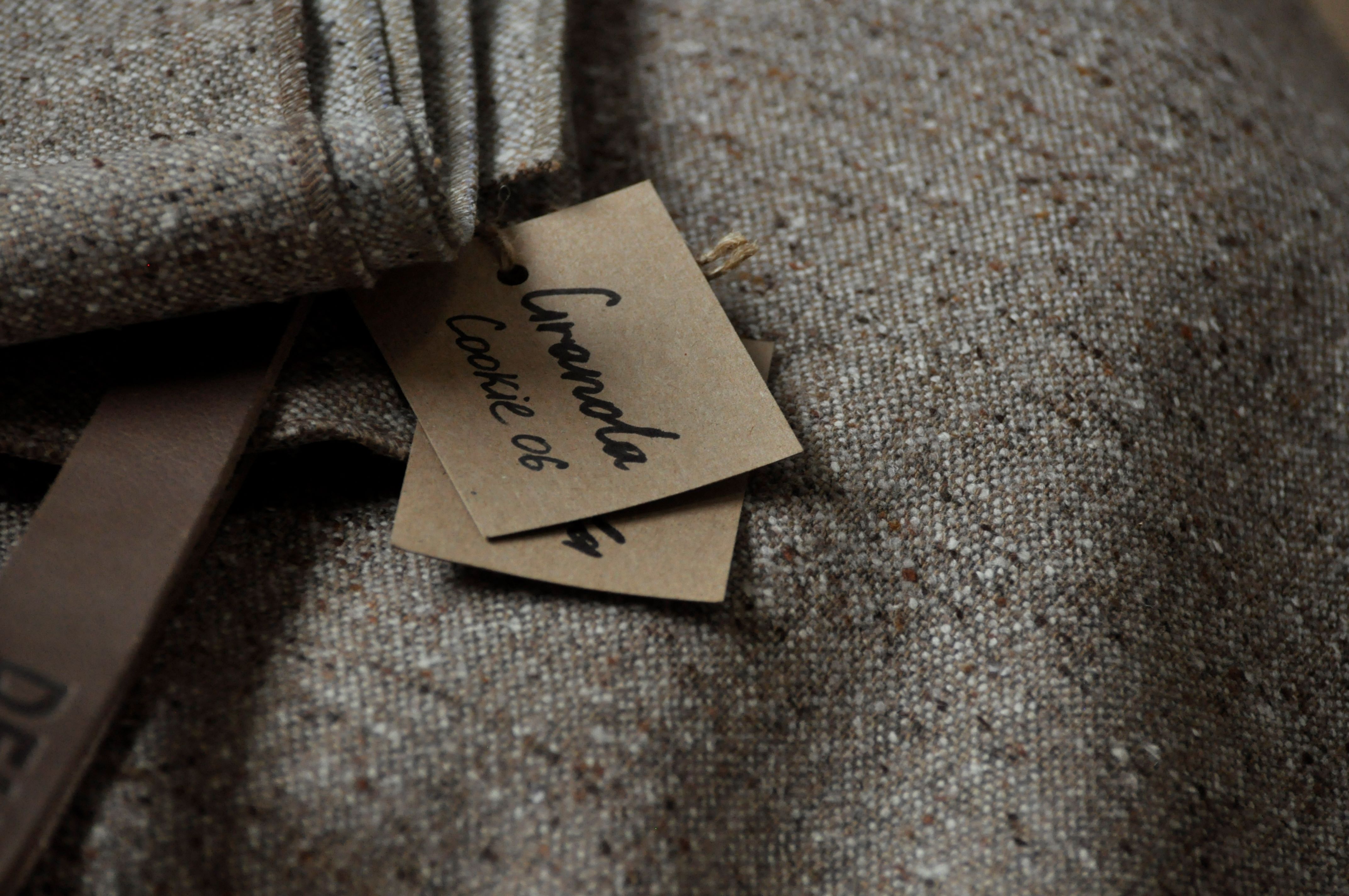


The natural imperfection of recycled fabrics emerge as an attractive option due to their originality and uniqueness. Presently, the granular surfaces with an uneven, spontaneous distribution of patterns, weave irregularities etc. seem to be a priceless rarity. Yet another advantage of these fabrics is the possibility of combining and arranging different, unconventional patterns in multiple, equally unconventional, complementing colours within one space or project.

Bouclé, or in other words beautiful knots and loops. Problem solving captured in textures.
Nowadays, in times of sensory design development that emphasises sensuous perception of the reality, materials with complex surfaces and 3-D structures seem to be nothing out of the ordinary. The current trends are once more conducive to the popularisation of fleecy, curly, “uncombed” textures. The need to calm down the overstimulated minds of contemporary generations is reflected in design that seeks for gentleness and tranquillity in the form of oval shapes and the lack of sharp edges and contrasts. These changes also lead to new textile choices. The rounded furniture edges require soft, thick, drapable and dense structures that hide the seams and diminish the uncomfortable angles and geometries.
Fabrics cease to be smooth and flat. Instead, their irregular traceries, loops, knots of various origin with differing thickness, density and roughness are becoming an essential element and determinant of comfort in modern sofas, couches, armchairs and ottomans.



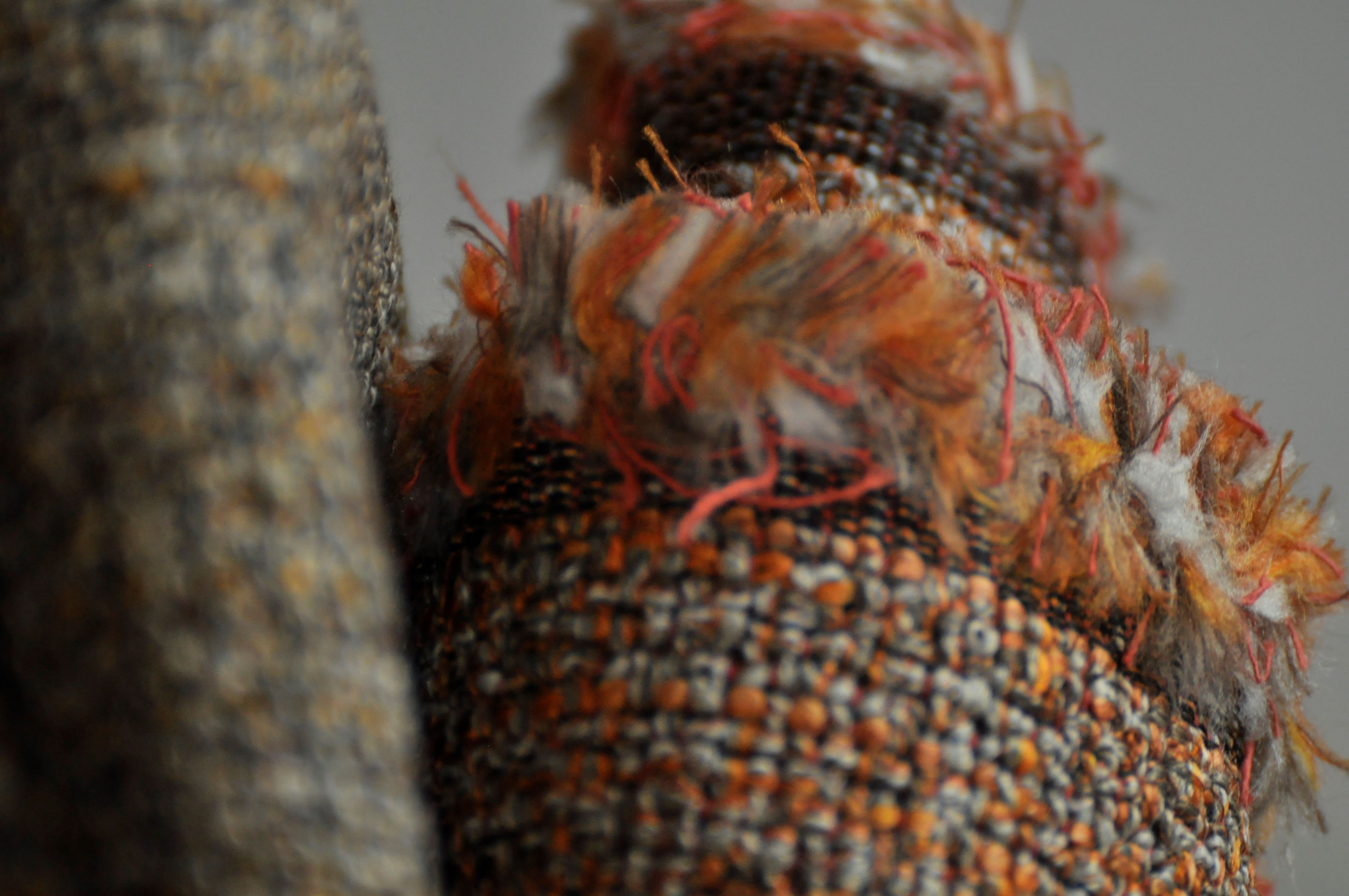
The fine shades of wear and tear. Mineral dyes do their job.
The DNA of recycling-inspired fabrics is also based on the new colour palette, whose lower saturation, less profound contrasts, and blurred hues are due to the naturalness of organic and mineral dyes. Lightened colours, subdued pastels and earth-like pigments form a new colour scale of contemporary textiles.
Today, colour plays the role of a comforter. The new palette is like a warm blanket that always strives to stay close to nature, reconciling the conflicting elements, providing a rest for the eyes, enhancing relaxation and cosiness, and offering the sense of security. Colours become ever softer, milky and hazy. An enormous role in popularising these shades is played by increasingly common mineral dyes, hues drawing upon biomass, yielding an effect of subdued palette of recycled materials.
The colour epiphany of 2024 will be an earth hue palette with warm, saturated, mineral pigments which symbolise the return of urban interiors to nature.
These colours invoke the “spirit of the earth”, connote with organic substances, soil samples, ancient ochres, rock deposits, metallic colours, shades of spiritual renewal, relaxation, peace and internal regeneration.


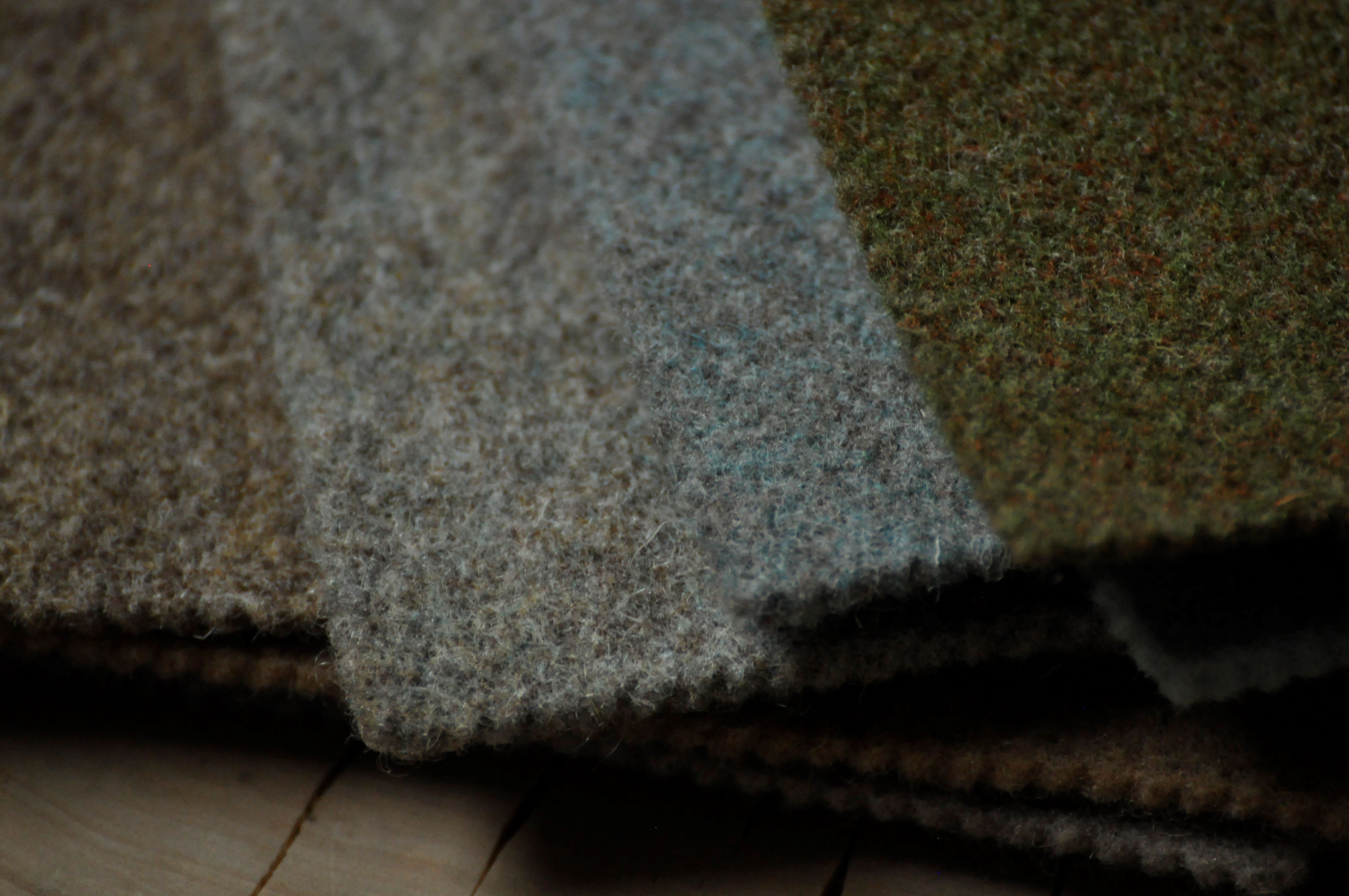
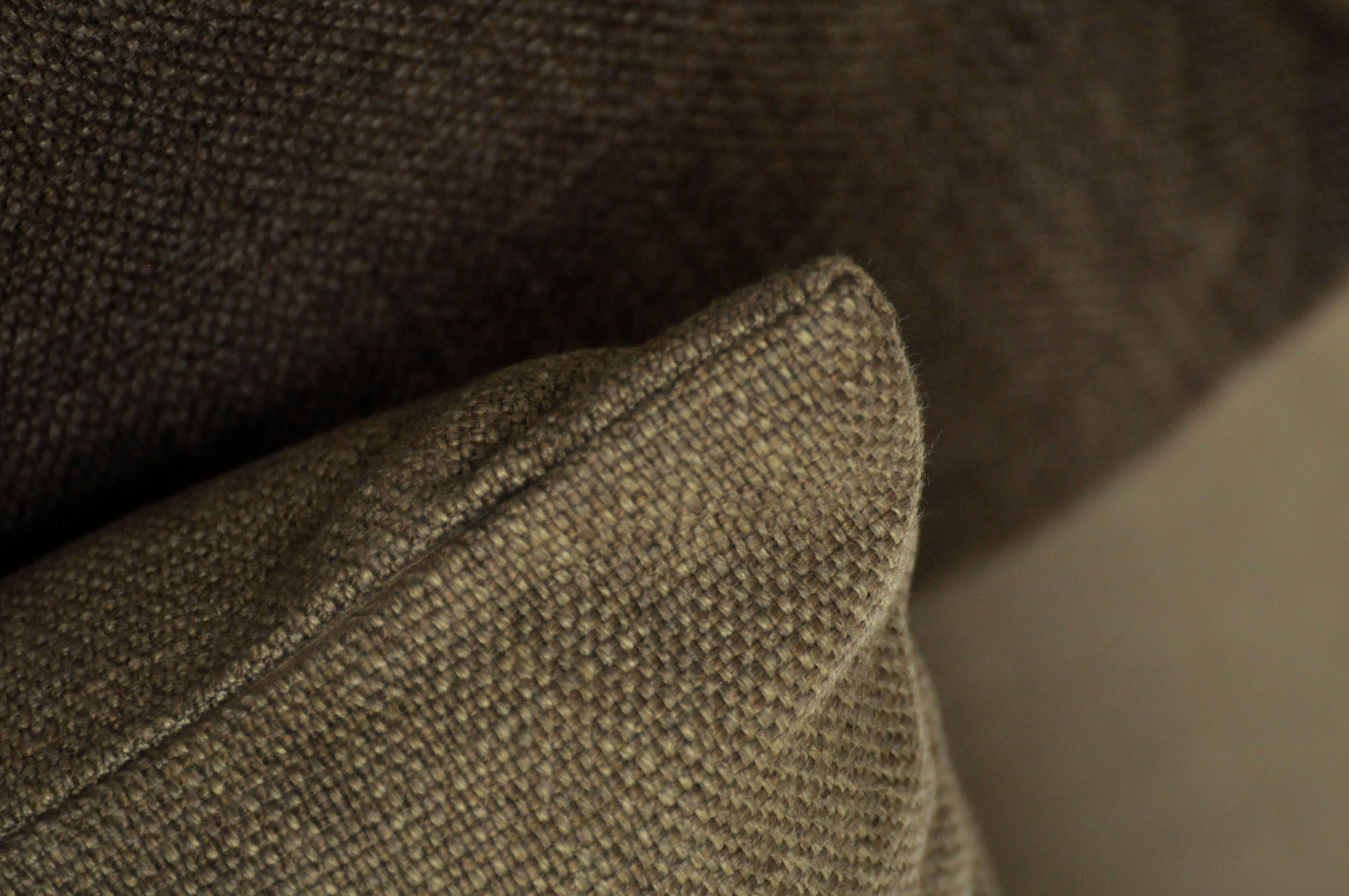

Fabrics from the Dekoma collection featured in the session:
Pleasant to the touch, knitted velour with a three-dimensional texture. It is created in a complex production process – starting from dyeing, through printing a delicate pattern to embossing the characteristic structure and reinforcing the fabric with soft and thick backing. With its high abrasion resistance of over 100 000 Martindale cycles, the fabric is a perfect choice for cushions and upholstery. Sora palette contains 18 colours with intense, original shades, which are additionally invigorated by the effect of irregular dyeing. This modern interpretation of velour is suitable for both eclectic and Boho style projects as well as industrial or loft interiors.
It is a tweed upholstery fabric with a visual "used look" effect. The colour transitions of irregular strands look like abrasions caused by intensive, long-lasting use, and the colours themselves are faded. It is a great choice forrustic interiors, but also for loft or industrial interiors - where the passage of time visible on objects is not a disadvantage but an advantage that proved authenticity. Natural, broken colouring matches perfectly with aged wood, metal, brick, terracotta, stone. Tweed fabric (especially pastel shades of bastard, yellow and pink) can also be interpreted in chanel style - combined with golden haberdashery accessories, add sublime metals in the form of pearl buttons and beads. It's a mixture of many types of fibers with a wide range of characteristics, providing this fabric not only with intriguing texture and appearance, but also with perfectly balanced functional properties.
Decorative and upholstery fabric inspired by sheep fleece with a natural, yet quite rough appearance. This bouclé fabric boasts a distinctive, irregular loop weave and a long pile. The fabric is thick, dense and pleasant to the touch. It comes in 6 subdued colours. The colour palette includes intense ginger, warm white and black, as well as muted shades of grey, beige and brown. Aries is an excellent choice for furniture upholsteries and decorative elements like cushions and bolsters.
Upholstery boucle fabric with a dense weave and a soft haptic loop pile. It is ideal for the tapestry of furniture with non-typical, complexed shapes e.g. organic, rounded off for this reason, it will work on modern sofas, armchairs, pouffes. In the range of 16 shades, you will find a variety of intense, saturated colours such as red, navy blue, anthracite, black, yellow as well as delicate variants of beige, coffee with milk, pink heather and dove grey.
A noble, thick woollen fabric recommended for upholstery, but also suitable for decoration. It has good technical parameters and is naturally flame-retardant, as proven in the cigarette and match tests in accordance with British flame retardancy standards. Available in a range of 40 beautiful colours, including both natural colours (earth, grass, stone), classic neutral shades (beige, brown, cream and grey), and vibrant, deep colours not commonly found in wool fabrics: fuchsia, plum, aubergine, and emerald green.
Creative thought, text, photographs and styling: Małgosia Bernady/ MBBM Studio.







